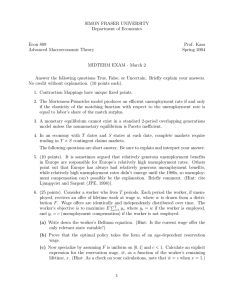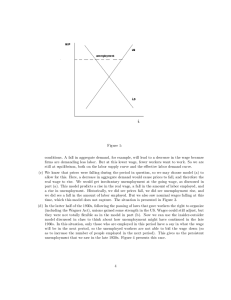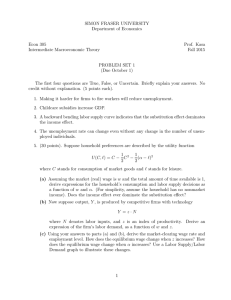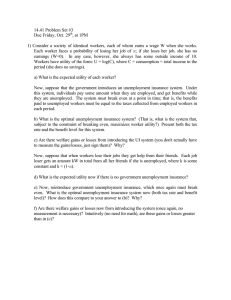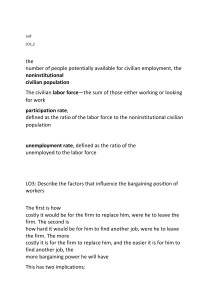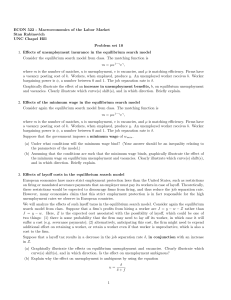SIMON FRASER UNIVERSITY Department of Economics Econ 808 Prof. Kasa
advertisement
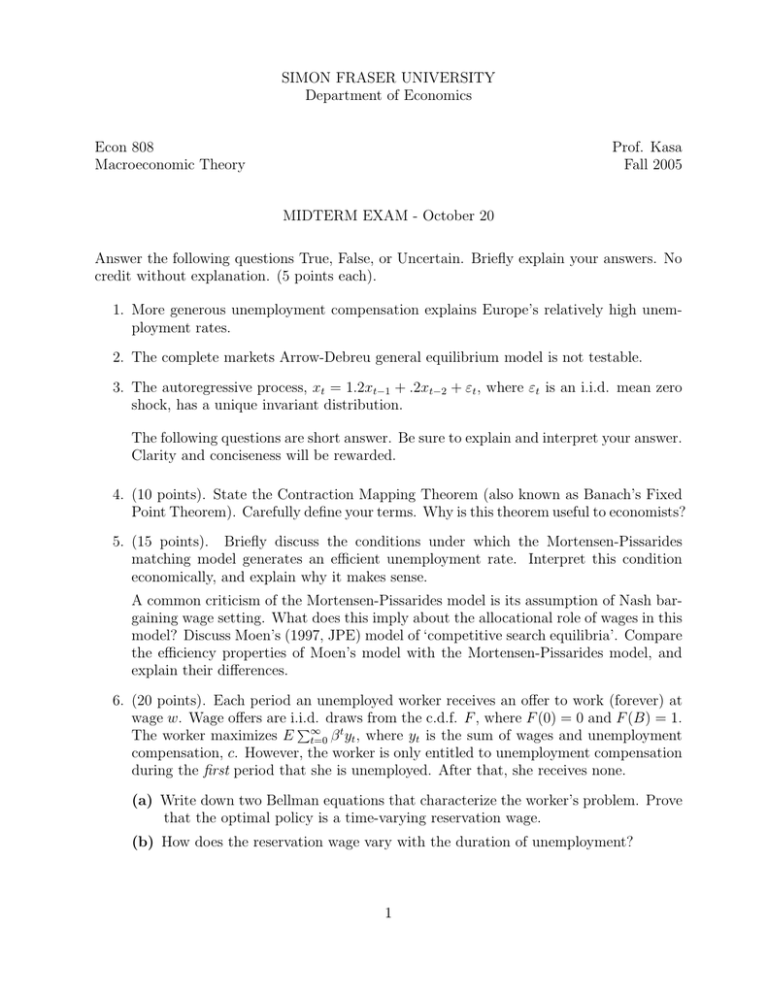
SIMON FRASER UNIVERSITY Department of Economics Econ 808 Macroeconomic Theory Prof. Kasa Fall 2005 MIDTERM EXAM - October 20 Answer the following questions True, False, or Uncertain. Briefly explain your answers. No credit without explanation. (5 points each). 1. More generous unemployment compensation explains Europe’s relatively high unemployment rates. 2. The complete markets Arrow-Debreu general equilibrium model is not testable. 3. The autoregressive process, xt = 1.2xt−1 + .2xt−2 + εt , where εt is an i.i.d. mean zero shock, has a unique invariant distribution. The following questions are short answer. Be sure to explain and interpret your answer. Clarity and conciseness will be rewarded. 4. (10 points). State the Contraction Mapping Theorem (also known as Banach’s Fixed Point Theorem). Carefully define your terms. Why is this theorem useful to economists? 5. (15 points). Briefly discuss the conditions under which the Mortensen-Pissarides matching model generates an efficient unemployment rate. Interpret this condition economically, and explain why it makes sense. A common criticism of the Mortensen-Pissarides model is its assumption of Nash bargaining wage setting. What does this imply about the allocational role of wages in this model? Discuss Moen’s (1997, JPE) model of ‘competitive search equilibria’. Compare the efficiency properties of Moen’s model with the Mortensen-Pissarides model, and explain their differences. 6. (20 points). Each period an unemployed worker receives an offer to work (forever) at wage w. Wage offers are i.i.d. draws from the c.d.f. F , where F (0) = 0 and F (B) = 1. t The worker maximizes E ∞ t=0 β yt , where yt is the sum of wages and unemployment compensation, c. However, the worker is only entitled to unemployment compensation during the first period that she is unemployed. After that, she receives none. (a) Write down two Bellman equations that characterize the worker’s problem. Prove that the optimal policy is a time-varying reservation wage. (b) How does the reservation wage vary with the duration of unemployment? 1
